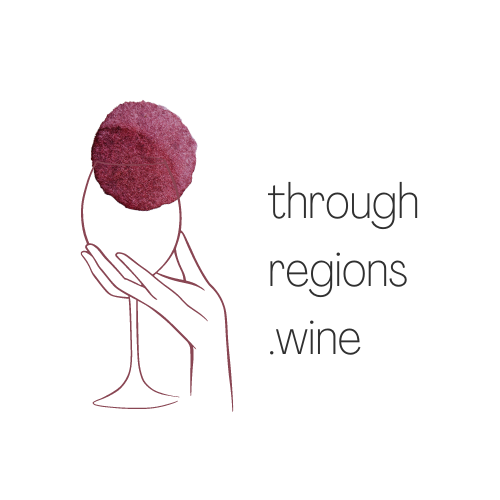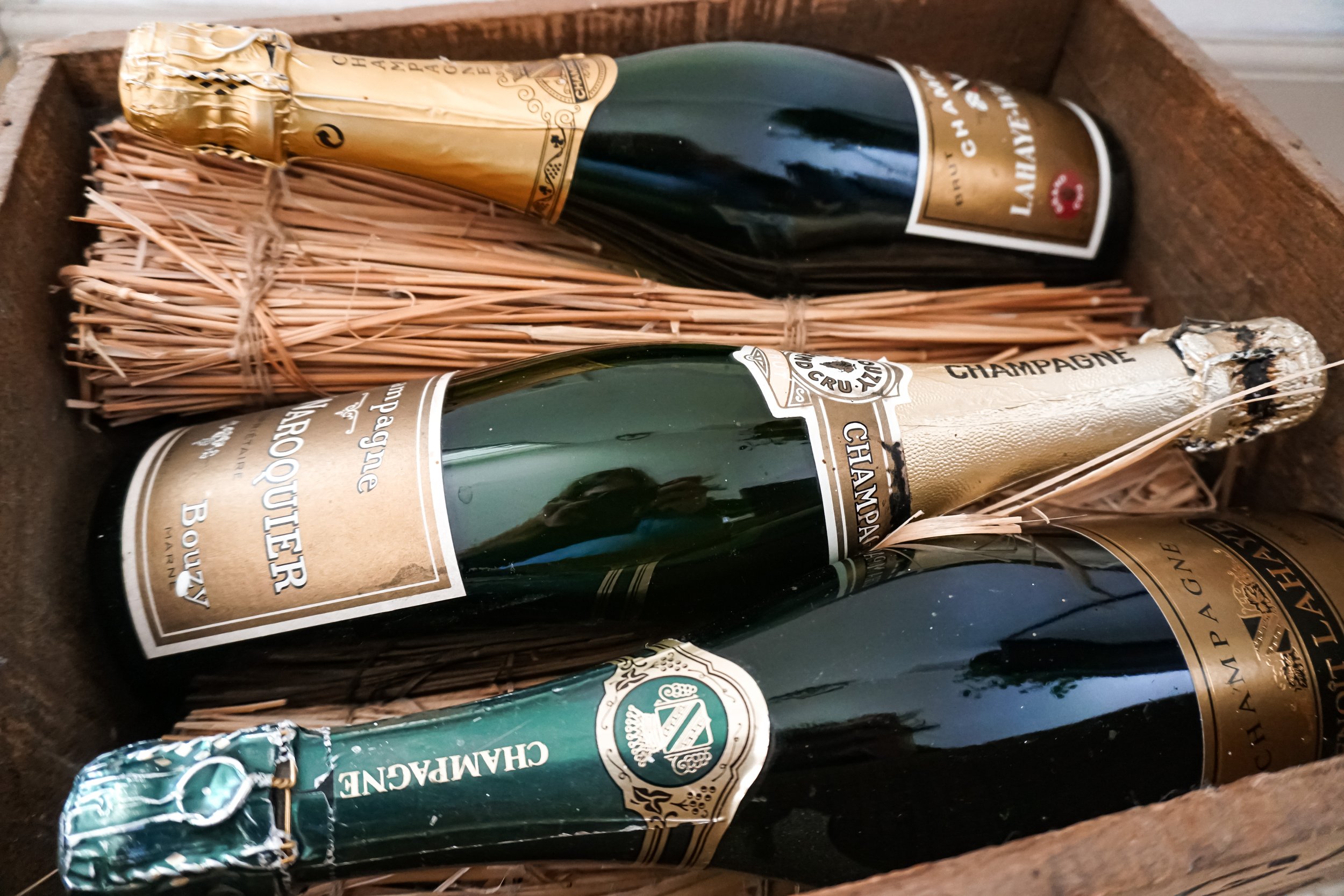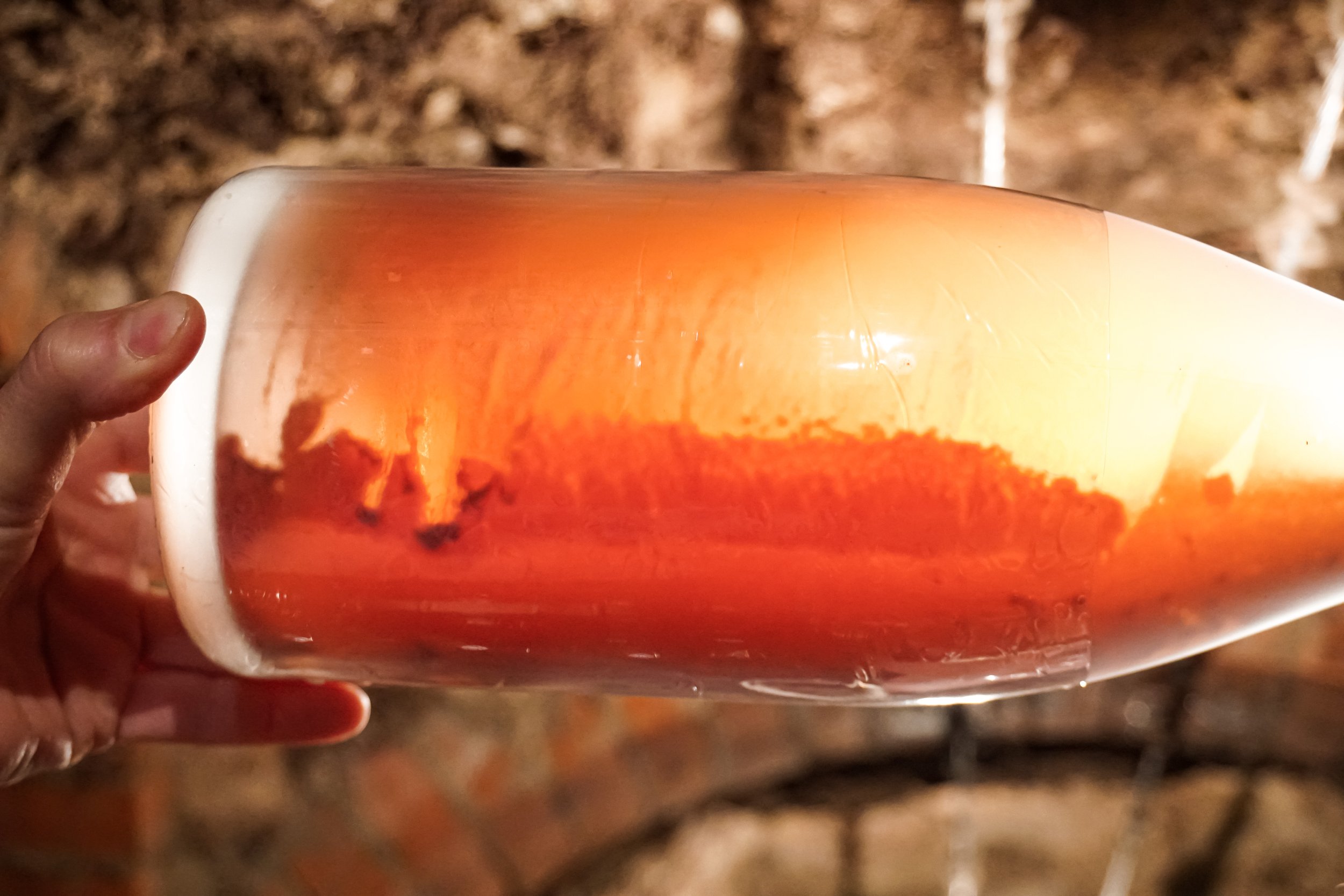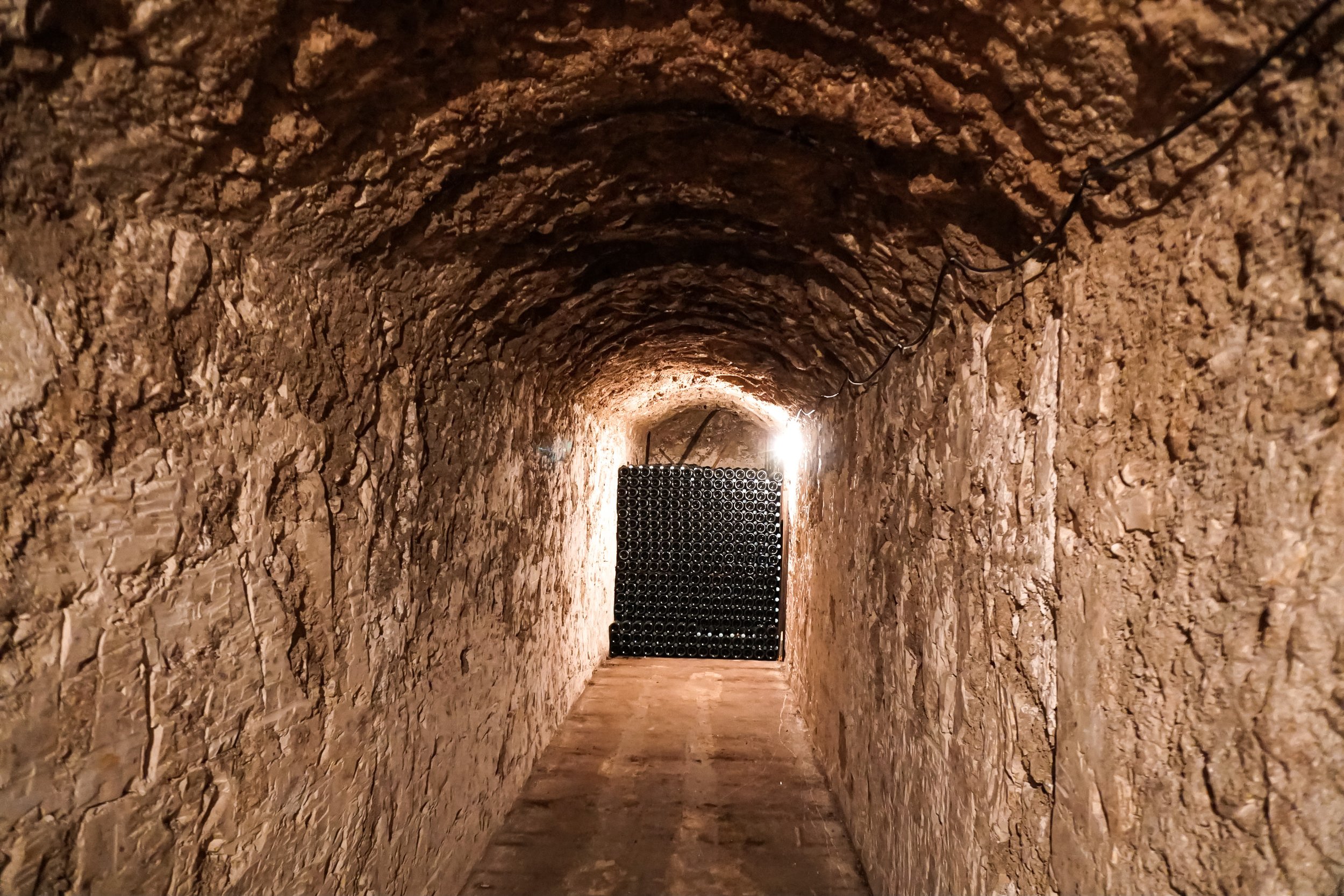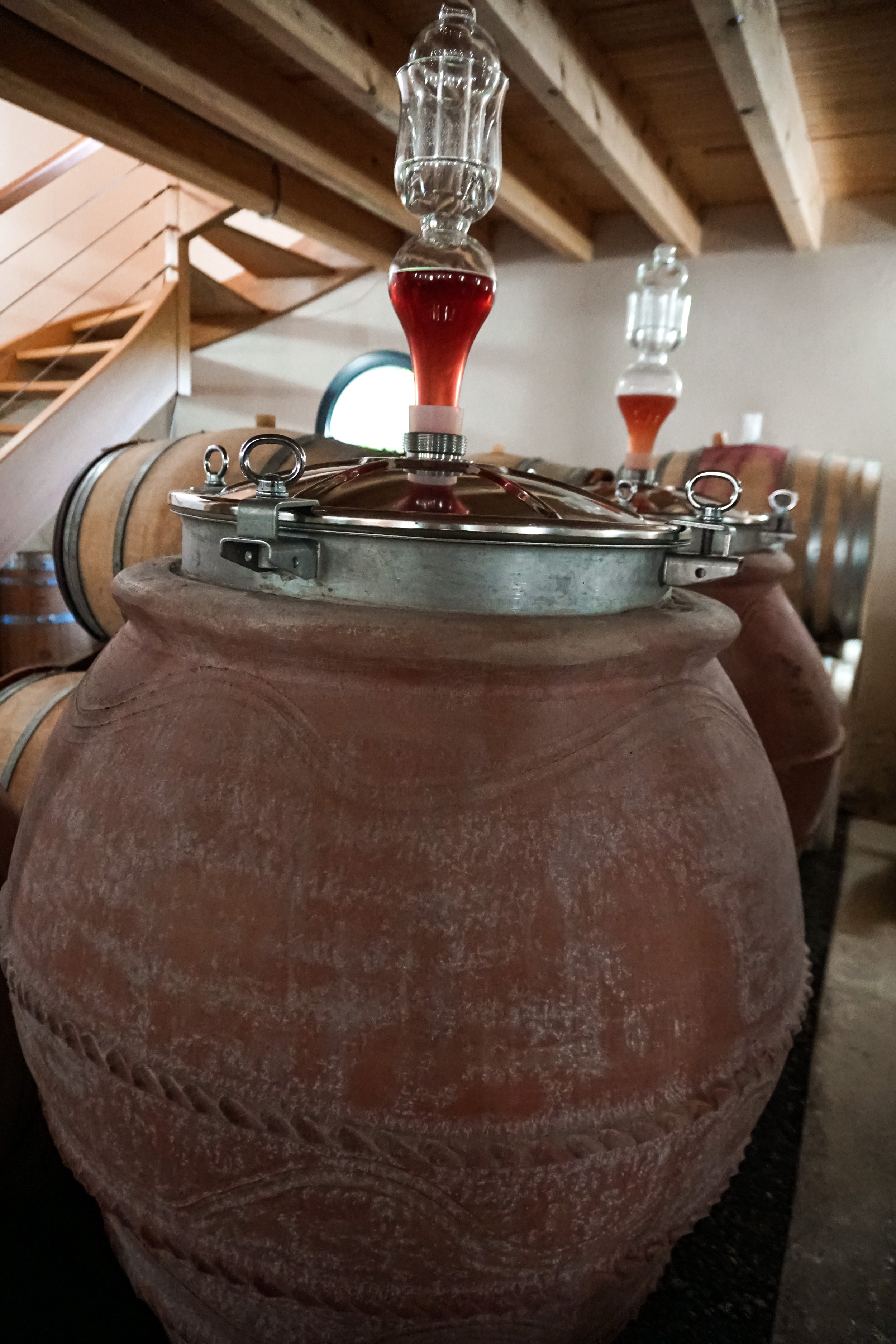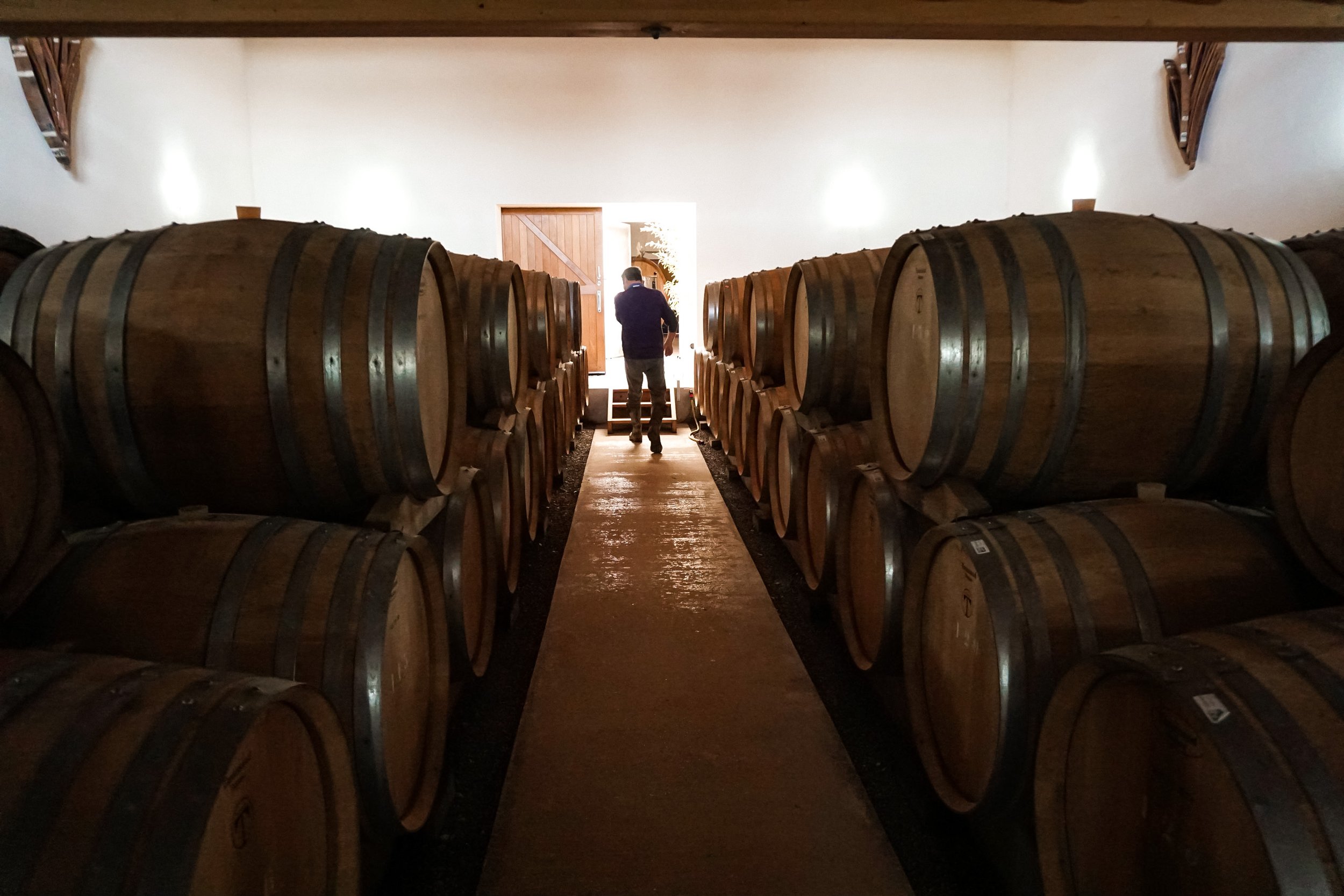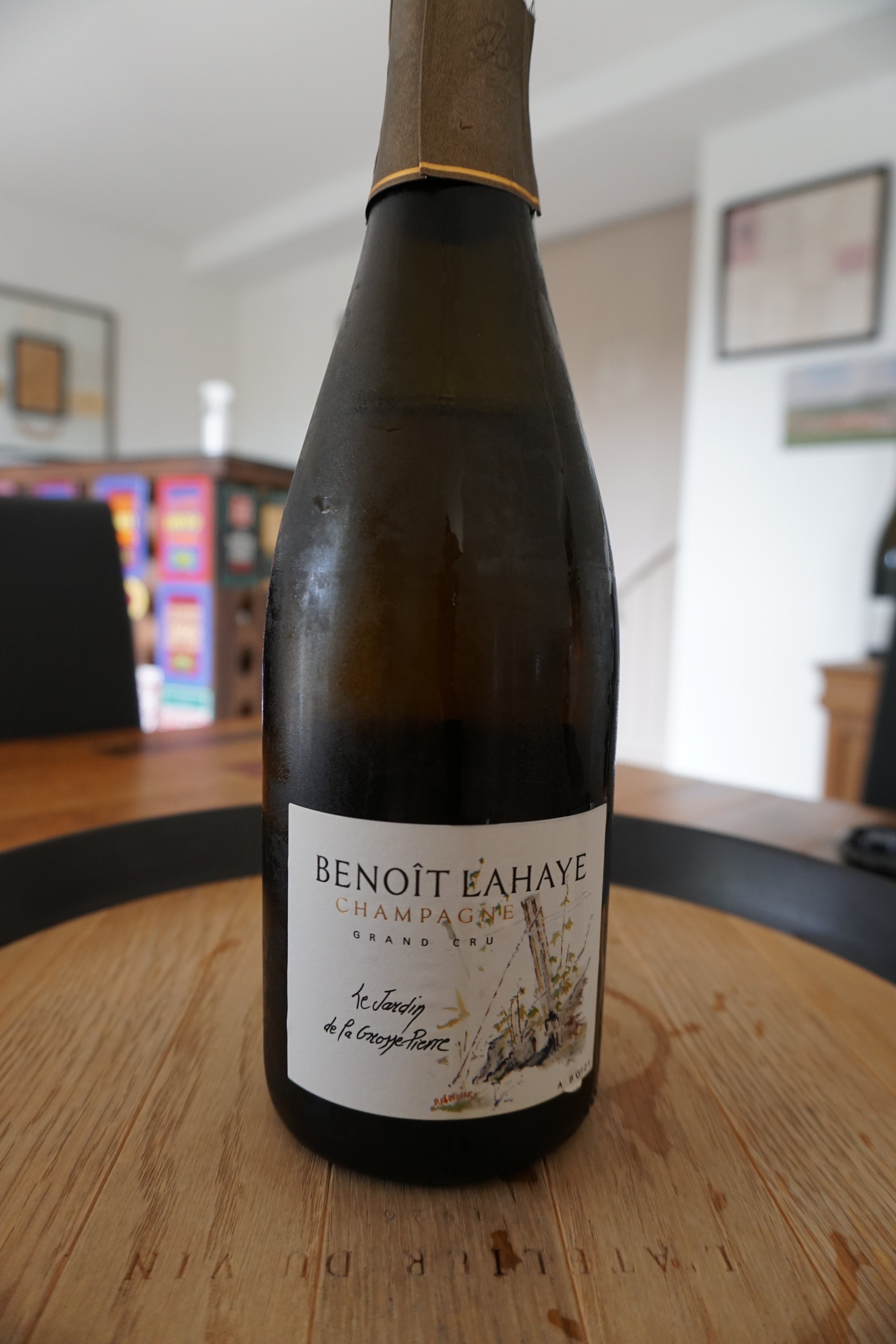Champagne. Benoît Lahaye
Benoît Lahaye is one of the most recognized biodynamic producers in the region. His champagnes are concentrated, full-bodied, dense and powerful, which is typical for Bouzy and the neighboring villages of Montagne de Reims. They have distinct bruised apple and toasty notes with a chalky finish. The modern history of Champagne Lahaye begins in 1993 when Benoît started to work in the family vineyards established by his great-grandfather. As was common back then he sold all of his grapes to the big champagne houses. The independent production started in 1996 when the family left the cooperative.
In the picture below you can see the old labels: first belongs to the grandfather, the next to his parents and the third one you can see is the first label of Benoît – starting from 1993, although the labels were refreshed since then. Benoît’s grandfather carried on with farming grapes during the Second World War, his notebook holds records for each year between 1939 and 1945 and the crop size. The history behind the name on the labels is as follows: his grandfather's name was Waroquier, then came Lahaye – Waroquier (label from 1980). Monsieur Waroquier had one daughter – Benoît’s mother and her husband's surname was Lahaye, thus the champagne Lahaye was born. Benoît is the fourth generation working at the estate, with their children being the fifth. Currently 5 people in total work on the property, including Valérie, Benoît and their two sons. From 2009 they are certified biodynamic (Biodyvin).
They look after 5 hectares of vines – mostly in Bouzy and Ambonnay with a small parcel of Chardonnay near Vertus in Côte des Blancs. The ratio of the fruit is 88% Pinot Noir to 12% Chardonnay. Valérie told me “the most difficult job happens in the vineyard” and this is exactly where their focus lies. All the wines from Benoît Lahaye are vinified and aged in oak for 10 months before the wine is transferred over to the bottle. The vintage champagne spends almost 4 years on the lees. In total they have 200 barrels in the cellar and they taste the wine to see how it evolves approximately three times during aging. That’s a lot of tasting!
The barrels are both from Burgundy and Bordeaux. Wine ferments with natural yeasts, and malolactic fermentation happens in wood for every cuvée. Riddling is manual only for jeroboams – the rest is riddled with a gyropalette. The total production is around 40 000 bottles and currently in the cellar there are around 200 000 bottles resting. They work with cuvee and taille - taille from the better vintages being used in vin de reserve to elevate the quality of the more problematic ones. Around 20% of the production goes to the restaurants and wine shops in France and the remaining 80% of the wine is exported to 48 countries. Valérie is responsible for the whole office work – she deals with the orders, inquiries and allocations.
We discussed the recent vintages: 2022 was a very easy one, in contrast to 2021. There was a lot of sun and the harvest took place at the end of August and the beginning of September. Some winemakers decided to pick too early and ended up with only 9% ABV – in this case they usually had to add some more dosage to bump up the alcohol. Benoît landed at 12% in 2022 which he was very happy with. The optimal ripeness ensured no dosage was needed. When asked about climate change he said the conclusions can only be drawn from the past and the present - “only one thing is certain – from 2000 the harvest used to be in October, but this year was at the end of August and beginning of September” he told me. “Then there is a weather variety – 2021 was rainy and cold, 2022 very hot. 2016 was a difficult vintage with a lot of rain and a small crop. On the other hand, 2017 was very good. It always goes like this – if one vintage is more difficult and then the next one compensates”. Valérie added that 2018 along with 2022 she would rate as exceptional vintages – the best she can remember.
Further on the topic of climate change Benoît mentioned that the winters became mild, and the season begins earlier – sometimes between February and March. Spring frosts are the biggest problem nowadays, but mildew is also a big challenge when it rains early in the season, especially for biodynamic growers where usage of sulphur is strictly limited. The vines begin to wake up from the winter dormancy when the temperature rises to around 10 degrees and if the spring frosts come in April it will decimate the crop. One solution is pruning later, which optimally would be carried out in March but that’s not always possible. Ploughing also happens later to avoid disturbing the nitrogen which can transmit the false signal to the vines which in return can start waking up too early. It happens either with the lovely horse of Benoît named Tamise or with a tractor.
Benoît believes it is very difficult to say where we are heading with the climate change. Going down the memory lane: 2013 he harvested in October, 2015, 2016, 2017 at the end of September, 2018, 2019 and 2022 – end of August and beginning of September. 2021 – end of September. As he compares it to his grandfather’s data the conclusion is obvious: only in 1959 he harvested as early. Meanwhile, Benoît already has 10 vintages carried out at the end of August. I asked him to pick one vintage between 2022 and 2018 and he told me he personally prefers 2022. Having said that he doesn’t shy back from underlining the difficulties of this vintage, for example, the high alcohol of the vin clair – rosé acquired 13% ABV before the second fermentation! The fruit from 2022 was lovely and in June and July they didn’t spray the grapes at all. All in all, it looks like 2022 is a vintage to look forward to.
Benoît Lahaye line-up consists of:
Brut Nature Grand Cru - made from 90% Pinot Noir and 10% Chardonnay sourced from Bouzy and Ambonnay grand cru villages. Based in 55% on the 2016 vintage, the reserve wines are from 2017 and 2018 (dominating). It was initially aged in used barrels and then given two and a half years of bottle aging on the lees before disgorgement in April 2022 without dosage. The wine has a nice balance and the Chardonnay keeps the fruit in check. Bruised apples and apple pie are the typical nose of Benoît champagnes. Great value for money!
Blanc de Noirs Grand Cru – the vines are on average 25 years old. The grapes are sourced from lieu-dit Cercets – it is always a single parcel. Aging occurs in barrels, dosage is 3g/l and you can barely feel it. Red fruits, mostly strawberry with a very good body, blood orange, and wonderfully balanced acidity are driving this wine to a long and mineral finish. This is definitely a gourmand champagne that requires food.
Blanc de Blancs - Voipreux 1er Cru - no dosage and no SO2 are added. You can sense green apple, butter, and lemon zest on the nose. Brioche and a slight touch of honey on the palate are underpinned with some spices during the long and pleasant finish.
Jardin de la grosse Pierre 2017 – “big stone garden” is a mix of 7 grape varieties (Pinot Noir, Pinot Meunier, Chardonnay, Pinot Blanc, Arbanne, Petit Meslier, Pinot Gris) allowed in the Champagne region and some ancient ones – even Benoît is not sure regarding the provenance of the grapes. The vines here are co-planted on a south-west facing hillside by Benoît’s grandfather from 1927. This wine is aged in barrels with small amounts of SO2 added at the press (17mg/l) with no dosage. After 4 years on the lees, wine is very complex on the nose. It’s also umami-rich and savory on the palate, you can feel the soy sauce, green tea, and white flowers with lovely pear and pineapple hints. Simply excellent.
Millésimé 2017 - comes from almost 60 years old vines from the prime lieux-dits of Monts de Tauxières and Haut des Argentieres in Bouzy. Wine is fermented in 225 l barrels and MLF always takes place. With 4g/l dosage making it extra brut it shows a tense, vinous depth of red fruits, exotic notes of pineapple, passion fruit, pear, and earthy notes of mushrooms. The finish is long and oozes the class. This is what vintage champagne should be all about!
Rosé de Maceration – is made from 40 years old vines, lieu-dit Les Juliennes in Bouzy. The base vintage is 2018 and the whole bunches are macerated for 3-4 days before being pressed. The wine is aged 50% in amphora (they have 4 – only for the rose) which helps to maintain the fruity aromas and 50% in 300 l barrels, all with MLF. The nose is very pronounced with strawberries and raspberries and a hint of roses. On the palate red cherries with a very precise and minerally driven finish. Dosage 3g/l makes it extra brut. “Rosé doesn’t really work without dosage” Valérie told me. “It is very difficult to make a good rosé champagne. Even in Champagne not too many rosé can be labeled as good”. Especially the rose acquired with the blending method – “the only thing that changes is the colour but the flavour profile remains the same – therefore it brings nothing to the table”.
They also produce coteaux champenois red. This is one of the trends as the demand for the still wines from the Champagne region is growing nowadays. The world wants to drink red wine from Bouzy, but Lahaye produces only 1700 bottles. A lot of young winegrowers in Champagne try to make the most of it starting off with making still wines. The obvious advantage is that you do not have to age the wines before selling them. The bio-certification is another hot topic right now. People talk about working in biodynamics but they don’t want to get certified – some producers want to take advantage of the trend but do not really want to work in such a manner. Their work in the vineyards is not controlled – hence it is not possible to say if they follow the rules. And the control, as Valérie told me, is very strict. Following up on my trends question I inquired if the wine preparation techniques are being discussed between winemakers. “We often discuss the conditions of the vines and the vineyards but never the way we produce the wine - it’s like with chefs that do not share the recipe for their famous dish” – Valérie told me. Speaking of chefs this year Benoît won the “Winemaker of the Year” award by Gault & Millau France.
These are full-bodied and concentrated wines with great precision and consistency. During tastings organized by MS Piotr Pietras in Warsaw Benoît champagnes are in my opinion often beating more expensive labels from Champagne. With the typical density of fruit from Bouzy and Ambonnay, these will definitely be lovely food companions. If you get a chance to try Benoît Lahaye champagnes you shouldn’t hesitate. In Poland Benoît champagnes are imported by Terroiryści and you can find them at Kontakt Wino&Bistro and Spot Poznań.
